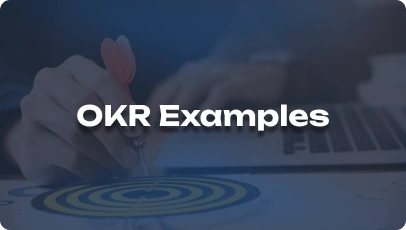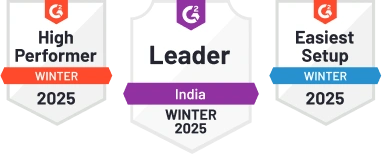Grab a chance to avail 6 Months of Performance Module for FREE
Book a free demo session & learn more about it!
-
Will customized solution for your needs.
-
Empowering users with user-friendly features.
-
Driving success across diverse industries, everywhere.
Grab a chance to avail 6 Months of Performance Module for FREE
Book a free demo session & learn more about it!
Superworks
Modern HR Workplace
Your Partner in the entire Employee Life Cycle
From recruitment to retirement manage every stage of employee lifecycle with ease.



Seamless onboarding & offboarding
Automated compliance & payroll
Track performance & engagement
Content KRA/KPI
- Key Responsibility Areas (KRA) & Key Performance Indicators (KPI)
- 1. Content Creation and Development
- 2. SEO Optimization
- 3. Content Strategy Planning
- 4. Content Performance Analysis
- 5. Content Calendar Management
- 6. Audience Engagement and Interaction
- 7. Performance Reporting and Recommendations
- 8. Content Quality Assurance
- 9. Cross-functional Collaboration
- 10. Innovation and Continuous Learning
- Real-Time Example of KRA & KPI
- Real-World Example: Enhancing Blog Content for Increased Engagement
- Key Takeaways
Key Responsibility Areas (KRA) & Key Performance Indicators (KPI)
1. Content Creation and Development
KRA: Responsible for creating engaging and high-quality content to drive traffic and user engagement.
Short Description: Develop compelling content for various platforms.
- 1. Number of new content pieces published monthly.
- 2. Average time spent on page by users for created content.
- 3. Content engagement rate (likes, shares, comments).
- 4. Content conversion rate (leads generated).
2. SEO Optimization
KRA: Optimize content for search engines to improve organic visibility and ranking.
Short Description: Enhance content for better search engine performance.
- 1. Keyword ranking improvement for target keywords.
- 2. Organic traffic growth rate.
- 3. Backlink acquisition for content pieces.
- 4. Click-through rate (CTR) from search engine results.
3. Content Strategy Planning
KRA: Develop content strategies aligned with business goals and audience preferences.
Short Description: Create strategic content plans for effective outreach.
- 1. Percentage of content aligned with brand messaging.
- 2. Audience engagement growth through content strategy implementation.
- 3. Content performance against set objectives.
- 4. Content shareability and virality metrics.
4. Content Performance Analysis
KRA: Analyze content performance metrics and provide insights for continuous improvement.
Short Description: Evaluate content effectiveness for optimization.
- 1. Content engagement trends over time.
- 2. Conversion rate from content to desired actions (e.g., sign-ups, purchases).
- 3. Content bounce rate and exit rate analysis.
- 4. Content A/B testing results and impact on performance.
5. Content Calendar Management
KRA: Maintain an organized content calendar for timely and consistent content delivery.
Short Description: Ensure content publication adheres to schedule and themes.
- 1. Content publishing adherence to calendar schedule.
- 2. Timeliness of content delivery for campaigns and promotions.
- 3. Content calendar flexibility and adaptability to changing needs.
- 4. Content calendar efficiency in resource utilization.
6. Audience Engagement and Interaction
KRA: Foster audience engagement through interactive content and community building.
Short Description: Engage with the audience to build relationships and loyalty.
- 1. Audience interaction rate on platforms (comments, messages).
- 2. Growth in audience participation in content-related activities.
- 3. Audience sentiment analysis towards content and brand.
- 4. Community growth and engagement metrics.
7. Performance Reporting and Recommendations
KRA: Generate regular performance reports and provide actionable recommendations for improvement.
Short Description: Analyze data to enhance content strategies and outcomes.
- 1. Accuracy and timeliness of performance reports.
- 2. Implementation rate of recommendations for content enhancement.
- 3. Impact of recommendations on content performance metrics.
- 4. Stakeholder satisfaction with performance insights and suggestions.
8. Content Quality Assurance
KRA: Ensure content quality standards are met in terms of accuracy, relevance, and voice consistency.
Short Description: Maintain content integrity and quality across platforms.
- 1. Content error rate (spelling, grammar, factual errors).
- 2. User feedback on content quality and relevance.
- 3. Consistency in brand voice and messaging across content pieces.
- 4. Content performance comparison based on quality standards adherence.
9. Cross-functional Collaboration
KRA: Collaborate with design, marketing, and other teams for integrated content strategies.
Short Description: Work with diverse teams to align content efforts for holistic impact.
- 1. Cross-functional project completion rate and effectiveness.
- 2. Team satisfaction with collaborative content processes.
- 3. Integration of varied team inputs for enhanced content outcomes.
- 4. Impact of cross-functional collaboration on overall content performance.
10. Innovation and Continuous Learning
KRA: Stay updated on content trends and technologies to bring innovation into content strategies.
Short Description: Foster creativity and learning in content creation processes.
- 1. Adoption rate of new content tools and technologies.
- 2. Participation in industry training and knowledge sharing sessions.
- 3. Innovation in content formats and delivery methods.
- 4. Contribution of new ideas to enhance content performance and relevance.
Real-Time Example of KRA & KPI
Real-World Example: Enhancing Blog Content for Increased Engagement
KRA: By implementing SEO strategies and creating data-driven content, a Content Specialist increased blog engagement and organic traffic.
- KPI 1: 30% increase in organic traffic to the blog within 6 months.
- KPI 2: Average session duration on blog posts increased by 20%.
- KPI 3: 15% growth in blog subscriber base due to improved content relevance.
- KPI 4: 25% rise in social shares of blog content indicating increased audience engagement.
The implementation of these KPIs led to enhanced blog performance, higher user engagement, and improved brand visibility in the online domain.
Key Takeaways
- KRA defines what needs to be done, whereas KPI measures how well it is done.
- KPIs should always be SMART (Specific, Measurable, Achievable, Relevant, Time-bound).
- Regular tracking and adjustments ensure success in Content Specialist roles.
Generate content in this structured format with clear, concise, and measurable KPIs while maintaining professional readability.




